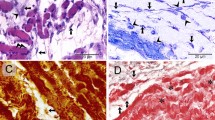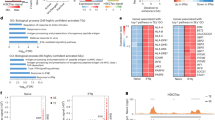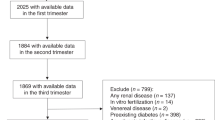Abstract
IT has been suggested that the mixed leucocyte reaction is triggered by antigenic differences between the two leucocyte populations involving the chief histocompatibility systems in the rat1,2 and in man3. Recent studies with mouse leucocytes indicate that antigens of the weaker H systems may also induce lymphocyte transformation in vitro4. For use as a histocompatibility test a unidirectional mixed leucocyte reaction is desirable. To produce cultures in which one-way stimulation occurs the lymphocytes of one partner must be capable of responding to an antigenic stimulus, while the cells from the second partner should be immunologically unreactive and yet stimulatory. This second population can be produced in a number of ways. (a) Freezing and thawing the stimulating cells will render them unresponsive, but such disrupted cells cause very weak reactions5,6. (b) Stimulating populations of macrophages can be produced from blood leucocytes by a short period of culture, before mixing with the allogeneic “responder” cells7. This method, however, is time consuming. (c) The stimulator cells can be rendered unresponsive by pre-treatment with mitomycin C8,10 or by high doses of X-irradiation9. I have compared the effectiveness of the last two methods using the same samples of cells in cultures set up simultaneously.
This is a preview of subscription content, access via your institution
Access options
Subscribe to this journal
Receive 51 print issues and online access
$199.00 per year
only $3.90 per issue
Buy this article
- Purchase on SpringerLink
- Instant access to full article PDF
Prices may be subject to local taxes which are calculated during checkout
Similar content being viewed by others
References
Elves, M. W., Transplantation, 6, 363 (1968).
Wilson, D. B., J. Exp. Med., 126, 625 (1967).
Bach, F. H., Albertini, R. J., Klosterman, H., and Day, E., Histocompatibility Testing, 55 (1967).
Festenstein, H., Transplantation Antigens and Tissue Typing (edit. by Elves, M. W., and Nisbet, N. W.), 165 (Robert Jones and Agnes Hunt Orthopaedic Hospital Management Committee, 1969).
Elves, M. W., and Israëls, M. C. G., Lancet, i, 1184 (1965).
Kasakura, S., and Lowenstein, L., Series Haemat., 11, 203 (1965).
Marshall, W. H., Rigo, S. J., and Melman, S., Lancet, i, 730 (1966).
Bach, F. H., and Voynow, N. K., Science, 153, 545 (1966).
Kasakura, S., and Lowenstein, L., Series Haemat., 11, 211 (1965).
Huemer, R. P., Keller, L. S., and Lee, K. D., Transplantation, 6, 706 (1968).
Elves, M. W., Vox Sang., 16, 81 (1969).
Elves, M. W., Transplantation Antigens and Tissue Typing (edit. by Elves, M. W., and Nisbet, N. W.), 145 (Robert Jones and Agnes Hunt Orthopaedic Hospital Management Committee, 1969).
Author information
Authors and Affiliations
Rights and permissions
About this article
Cite this article
ELVES, M. Comparison of Mitomycin C and X-rays for the Production of One-way Stimulation in Mixed Leucocyte Cultures. Nature 223, 90–91 (1969). https://doi.org/10.1038/223090a0
Received:
Revised:
Issue date:
DOI: https://doi.org/10.1038/223090a0
This article is cited by
-
Comparison of Mitomycin C and X-irradiation as Blocking Agents in One-way Mixed Leucocyte Cultures
Nature New Biology (1972)
-
Die gemischte Lymphocytenkultur in der immunologischen Spenderauswahl
Klinische Wochenschrift (1972)



